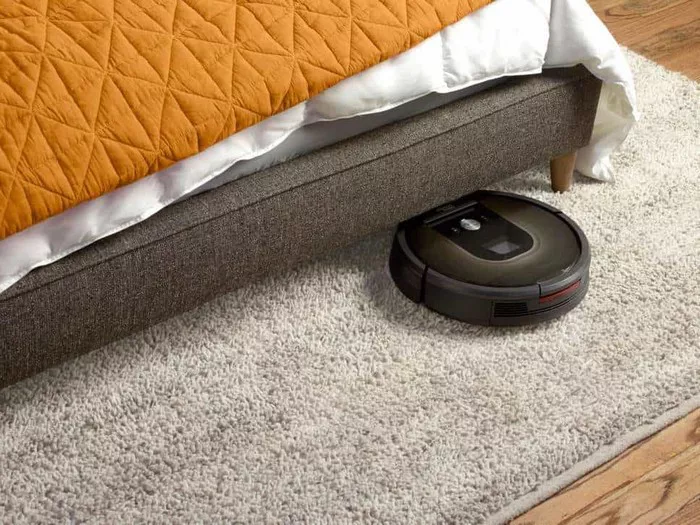In the bustling world of household cleaning, the quest for the quietest robot vacuum has become a top priority for many consumers. As homes become smaller and noise pollution increases, finding a vacuum that can efficiently clean without disrupting daily activities is essential. In this guide, we’ll delve into the intricacies of robot vacuums, exploring their noise levels, usage methods, advantages, disadvantages, costs, and more to help you make an informed decision.
Understanding Robot Vacuums
Robot vacuums are autonomous cleaning devices equipped with sensors and brushes that navigate around your home, picking up dirt, dust, and debris. These compact gadgets have gained immense popularity due to their convenience and efficiency. They can effortlessly glide under furniture, reach tight corners, and even schedule cleaning sessions, making them a valuable addition to any household.
Exploring Noise Levels
When it comes to selecting the quietest robot vacuum, noise levels play a crucial role. Traditional vacuum cleaners can be notoriously loud, causing disruptions and discomfort. However, advancements in technology have led to the development of quieter robot vacuums, ensuring a more peaceful cleaning experience.
Usage Methods
Using a robot vacuum is simple and straightforward. Begin by charging the device and programming it to your desired schedule using the accompanying app or control panel. Once set up, the robot vacuum will autonomously navigate your home, cleaning as it goes. Some models may require occasional maintenance, such as emptying the dustbin or cleaning the brushes, to ensure optimal performance.
Advantages of Quieter Robot Vacuums
The primary advantage of quieter robot vacuums is their ability to clean effectively without causing disturbance. Whether you’re working from home, enjoying a movie night, or simply relaxing, you can trust that your robot vacuum will quietly tackle dirt and debris in the background. Additionally, many models feature advanced sensors to avoid obstacles and stairs, reducing the risk of accidents.
Disadvantages of Quieter Robot Vacuums
While quieter robot vacuums offer numerous benefits, they also have some drawbacks to consider. One potential downside is their limited suction power compared to traditional vacuum cleaners. While they excel at maintaining cleanliness on a day-to-day basis, they may struggle with deep cleaning tasks or heavily soiled areas. Additionally, some users may find the initial setup process confusing, although most models come with detailed instructions for ease of use.
Cost Considerations
The cost of a quieter robot vacuum can vary depending on the brand, features, and capabilities. Entry-level models typically start at around $200, offering basic cleaning functions and navigation. Mid-range options range from $300 to $500 and may include additional features such as smartphone connectivity, scheduling capabilities, and more advanced sensors. High-end robot vacuums, priced at $600 or more, boast top-of-the-line performance, advanced mapping technology, and superior cleaning abilities.
Choosing the Right Model
When selecting the quietest robot vacuum for your home, consider your specific needs and preferences. Assess factors such as noise levels, cleaning capabilities, battery life, and additional features to determine the best fit for your lifestyle. Reading customer reviews and comparing different models can also provide valuable insights into performance and reliability.
Conclusion
In conclusion, the quest for the quietest robot vacuum is a journey worth embarking on for those seeking a harmonious balance between cleanliness and tranquility in their homes. By understanding noise levels, usage methods, advantages, disadvantages, costs, and other essential factors, you can confidently select a robot vacuum that seamlessly integrates into your daily routine while keeping your space pristine. With advancements in technology and ongoing innovation, the future of cleaning is quieter than ever before.
FAQs
Q1: Can a quieter robot vacuum effectively clean carpets and rugs?
A1: Yes, many quieter robot vacuums are equipped with brushes and suction power specifically designed to tackle carpets and rugs. While they may not offer the same deep cleaning capabilities as traditional vacuum cleaners, they can effectively remove surface dirt and debris, helping to maintain cleanliness in between more thorough cleanings.
Q2: Are quieter robot vacuums suitable for homes with pets?
A2: Absolutely! Quieter robot vacuums are ideal for pet owners looking to keep their homes clean and free of pet hair. Many models feature specialized brushes and filters designed to capture pet dander and fur, ensuring a thorough cleaning experience. Additionally, their quiet operation minimizes stress for pets who may be sensitive to loud noises.
Q3: How long do the batteries in quieter robot vacuums typically last?
A3: Battery life varies depending on the model and usage patterns, but most quieter robot vacuums can run for approximately 60 to 90 minutes on a single charge. High-end models may offer extended battery life or include features such as automatic recharging, allowing them to resume cleaning sessions without interruption.

